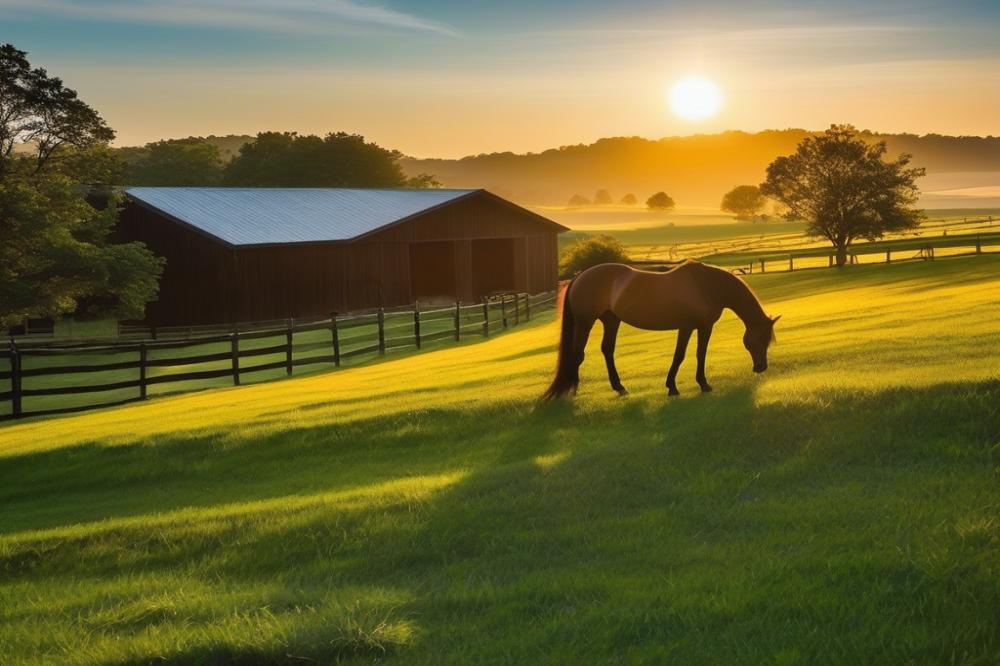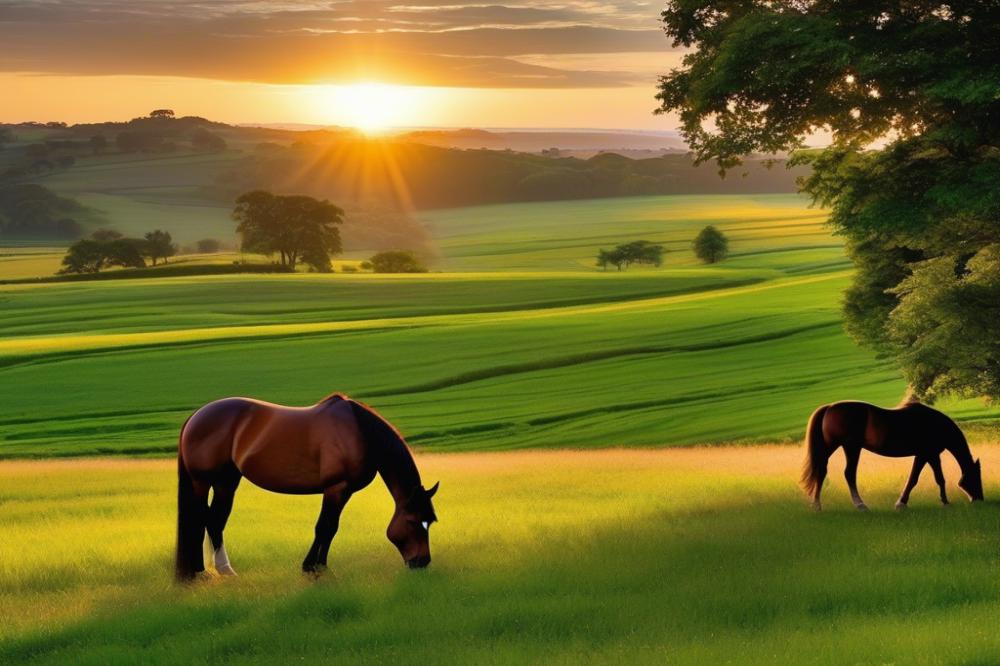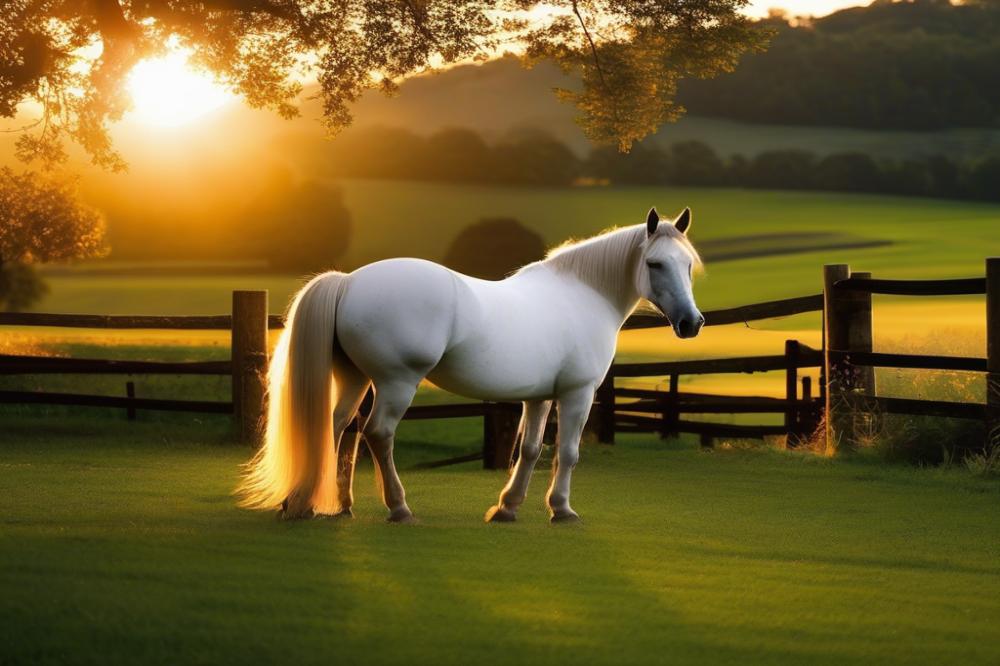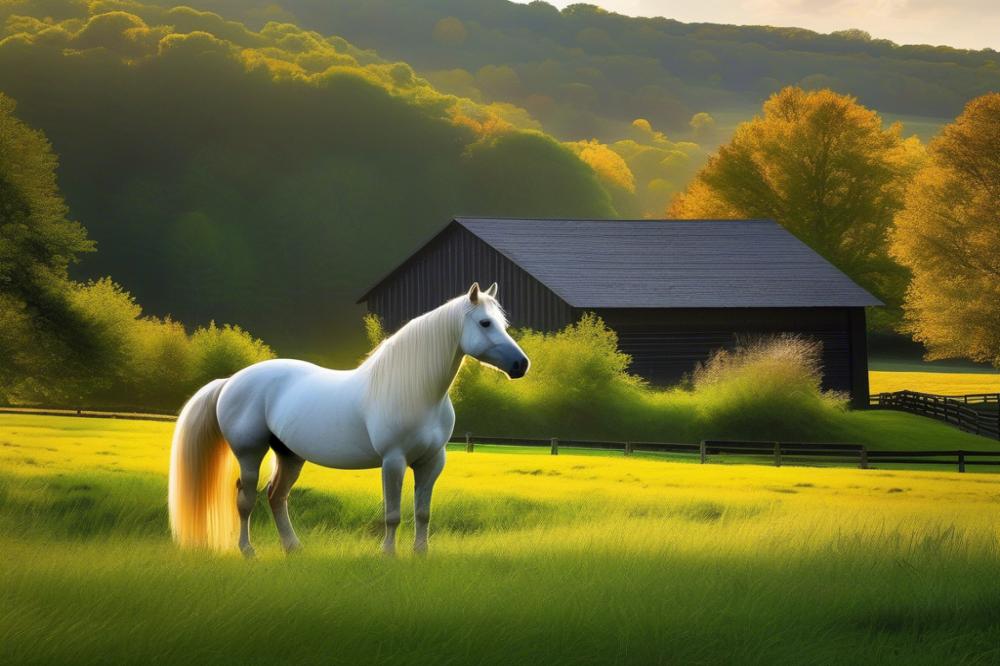Introduction
horse breeding plays a critical role in the equestrian world. It allows owners to create and develop horses that meet specific desires and needs. This process is not just about producing foals; it is about fostering generations of quality animals. Understanding the intricacies of breeding is essential for anyone looking to delve into this rewarding endeavor.
The breeding process involves careful selection of parents, considering their lineage, health, and desired traits. Not all horses are suitable for reproduction. Those with exceptional qualities should be chosen to ensure the best chance of producing healthy foals. The ultimate aim is to create horses that excel in competition or serve as reliable companions.
Goals of equine reproduction vary among breeders. Some aim for athletic performance, while others may focus on temperament or appearance. Each horse has its own set of characteristics that can be passed down to offspring. Thus, a strong understanding of genetics is vital. Selecting the right pair can lead to a line of horses with desirable traits.
Producing healthy foals requires knowledge and preparation. A well-researched breeding program can significantly impact the outcome. Every detail, from nutrition to medical care, matters in this process. After all, each foal represents the culmination of careful planning and effort. Breeders must approach this journey with patience and care to see the fruits of their labor.
Understanding the Basics of horse breeding

To begin with, it’s essential to understand the fundamental terms associated with this process. A mare is an adult female horse. Stallions are adult male horses. When these two are brought together, they can produce a foal, which is a young horse, typically under a year old. Recognizing these terms is the first step in navigating the breeding world.
Genetics play a critical role in various aspects of breeding decisions. The traits of both parents influence the characteristics of the foal. For instance, aspects such as size, temperament, and athletic ability can all be passed on. Selecting the right mare and stallion can lead to offspring that meet specific goals, whether those are for work, sport, or companionship. Breeders should carefully consider the bloodlines of both horses to make informed choices.
Overview of Important Breeding Concepts
Several concepts are crucial in the breeding process. The timing of breeding is vital; it usually takes place during the mare’s estrous cycle. Monitoring her heat cycles helps ensure successful mating. Additionally, knowing the health status of both animals is key. Healthy horses are more likely to produce healthy foals.
Another essential factor is the environment in which the breeding takes place. Stress can affect both the mare and stallion, leading to poor outcomes. Therefore, creating a calm, comfortable setting is necessary. Also, proper nutrition for both horses is important for their well-being and the growth of the foal.
Understanding conformation is another significant aspect. This term refers to how a horse’s body is put together. Well-proportioned horses are less likely to have physical issues. Breeders often analyze the structure of the mare and stallion before mating, seeking traits that complement each other.
Finally, being knowledgeable about common breed-related health issues is vital. Some breeds are prone to specific genetic disorders. Thus, it’s wise for breeders to research any potential health risks associated with their chosen pair. Thorough knowledge can help in making breeding decisions that promote healthier foals.
Preparing for Breeding

Selecting the Right Mare and Stallion
Choosing the right mare is crucial. Look for a horse that has good conformation and a strong bloodline. Her temperament should also be calm and manageable. A stallion should complement her qualities. His lineage should reflect strong traits you seek in foals. Research breeds carefully. Each horse has unique characteristics that may or may not suit your goals. Consult with experienced breeders if needed. Their insights can guide your selection process.
Conducting a Breeding Evaluation
Conduct a thorough breeding evaluation of the mare and stallion. Start by assessing physical attributes, such as body structure and movement. Observing how both horses behave around each other is important as well. Compatibility is key to successful breeding. Consider their performance records, too. A mare with a proven athletic background might produce competitive offspring. Think about genetic potential. Strong genetics in both parents raises the likelihood of desirable traits in foals.
Performing Health Checks for Both Mare and Stallion
Health checks form the backbone of preparing for breeding. Schedule a veterinary examination for each horse. Vaccinations must be up-to-date to prevent any illnesses. Testing for common diseases is essential. If either horse has health issues, address them before proceeding. Be sure to evaluate reproductive health. A vet can provide insights into fertility and breeding readiness. Prioritize proper nutrition, too. Healthy horses are more likely to produce healthy offspring. This thorough approach minimizes risks and supports a successful breeding process.
Breeding Techniques

Natural breeding vs artificial insemination
Natural breeding involves a stallion and a mare coming together in a pasture or stable. This method often feels more instinctual for the animals. Many owners appreciate the bonding that occurs between the animals during this process. On the other hand, artificial insemination offers flexibility and control. A veterinarian collects semen from a stallion and introduces it to the mare’s reproductive system. This technique allows breeders to access top bloodlines that may be geographically far away. Understanding both methods is crucial for any breeding decision.
Timing of breeding: understanding fertility cycles
Timing is essential in achieving a successful mating. Mare fertility cycles require close observation. Most mares go into heat every 21 days, but this can vary. Signs of heat include behavioral changes like increased vocalization, restlessness, and a willingness to stand for breeding. Knowing when to breed can significantly increase the chances of a pregnancy. Using veterinary assistance can help track ovulation. A hormone test or ultrasound can confirm the best time for breeding.
Best practices for a successful breeding process
A clean environment is critical for breeding success. This includes ensuring that both the mare and stallion are free from infections. Regular veterinary check-ups help maintain their health. It’s also important to monitor the mare’s body condition. A well-fed and healthy mare has a better chance of conceiving. Additionally, documenting each breeding cycle can provide valuable information for future seasons. Keeping track of fertility patterns allows for adjustments in strategy. Patience and care are essential throughout this process. Breeding requires commitment and attention to detail.
Caring for the Pregnant Mare
Nutrition and Veterinary Care During Pregnancy
Nutrition plays a vital role in the health of a pregnant mare. Providing a balanced diet supports the growth of the foal. High-quality forage, along with grains and supplements, is essential. Consult with a veterinarian to develop a proper feeding plan. The mare’s body will require extra energy and nutrients. Regular checks on vitamin and mineral levels should also be part of care. Routine veterinary visits are crucial as the due date approaches. Vaccinations and deworming help keep both mare and foal healthy.
Monitoring the Mare’s Health and Well-being
Watch for any signs of distress in the mare. Changes in appetite or behavior can indicate problems. Daily observations will help you stay informed. Keeping a clean and comfortable living environment is important. A stress-free atmosphere contributes to the mare’s overall well-being. Make note of any physical changes as the pregnancy progresses. Regular check-ins with your vet can provide peace of mind. Blood tests and ultrasounds may be recommended to monitor the pregnancy.
Preparing for the Arrival of the Foal
Preparation begins well before the foal is due. Create a safe and quiet space for the mare to give birth. Gather necessary supplies like clean bedding and foaling kits. Ensure that assistance is available in case of complications. Education on normal foaling signs can be beneficial. Familiarize yourself with the stages of labor. Knowing what to expect reduces anxiety during the process. Anticipation can be both exciting and nerve-wracking. Being ready helps make the arrival smooth for both mare and foal.
Welcoming the Foal
When the foal arrives, it’s an exciting moment. This new life needs immediate attention and care. The first few hours are crucial. Make sure the foal stands and nurses within that time. Look for any signs that may indicate health issues.
Foal Care and Initial Health Checks
Start by checking the foal’s vital signs. A normal breathing rate is important. The eyes should be bright and alert. If you notice any signs of lethargy or distress, contact a veterinarian immediately. A thorough check-up includes looking at the foal’s legs for any swelling or irregularities.
Importance of Early Bonding with the Mare
Bonding is key. A strong connection between the mare and the foal is essential for both. This relationship helps in the foal’s emotional development. The mare should feel calm and secure in her environment. Spend time observing them together, allowing them to interact freely.
Basic Training and Handling of the Foal
Begin handling the foal gently at an early age. Soft touches and calm voices help the foal become familiar with humans. Short sessions work well. Take time to introduce the foal to basic commands. Teaching to lead and accept a halter should be the first steps. Consistency is vital in training.
Gradually, you can introduce grooming tools. Let the foal feel and smell brushes and combs. This builds trust and eases the foal into routine care. Responding positively to interaction helps create a friendly and confident horse in the long run.
Final Thoughts on Breeding Your Horse
In summary, the process of breeding a horse involves several important steps. Selecting a suitable mare is crucial, as her traits will significantly influence the foal. Careful planning and research can lead to a successful pairing with a stallion that compliments her strengths. Timing is essential; understanding the mare’s heat cycle can maximize the chances of conception. Once the foal arrives, providing proper care and a nurturing environment will help it grow strong and healthy.
It is vital to approach this endeavor with responsibility and thoughtfulness. Breeding should always prioritize the health and well-being of both the mare and her offspring. Consider the long-term commitment involved in raising a horse. Each animal deserves a safe and loving home. Responsible choices contribute to the broader equine community, promoting quality and care.
Your journey into breeding can bring joy and fulfillment. Witnessing a new life emerge adds a special joy to owning a mare. With patience and love, you can enjoy watching the foal grow and develop its own unique personality. Cherish each moment, as they will create lasting memories. This adventure teaches important lessons about care, responsibility, and the deep bond we share with these magnificent creatures.



